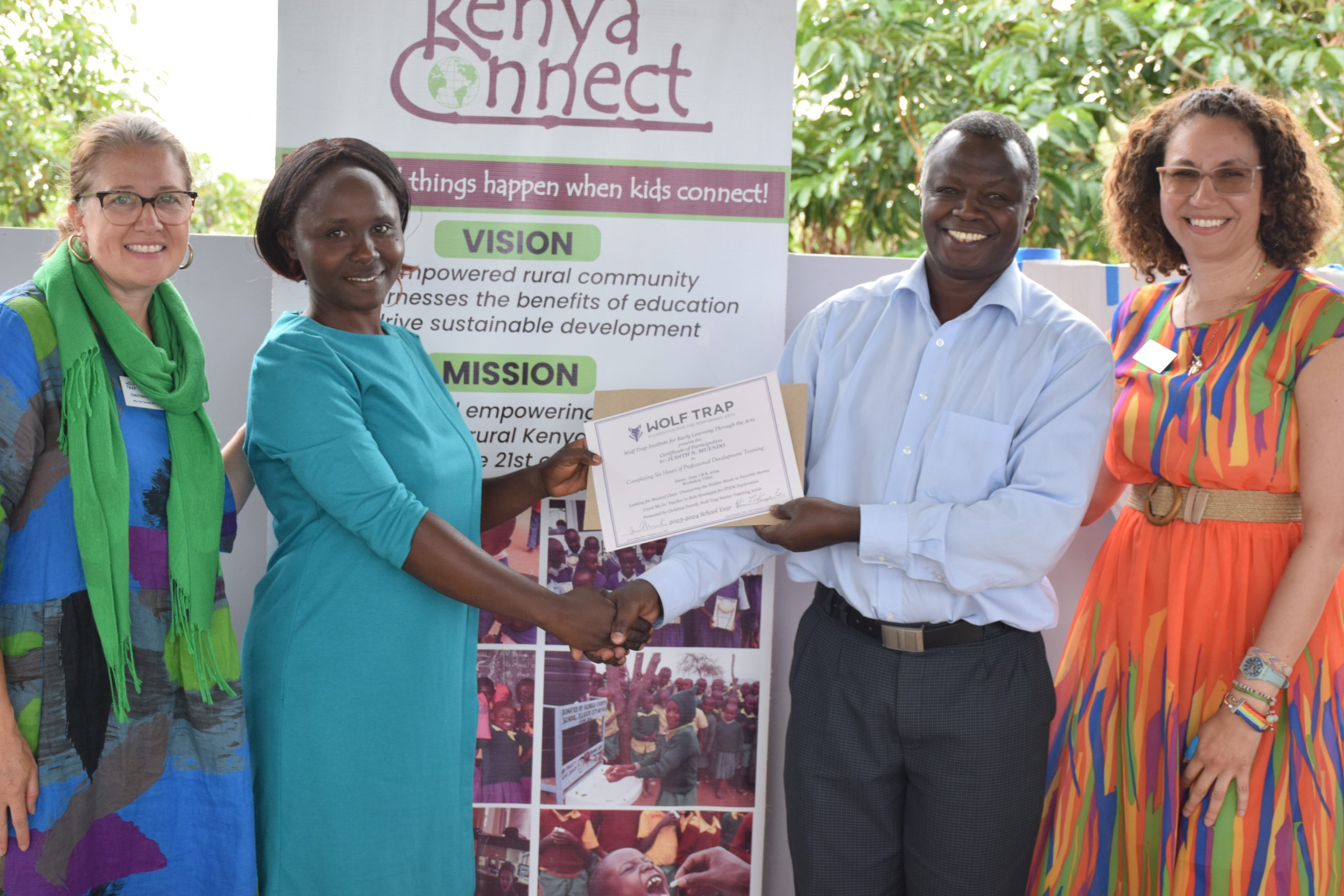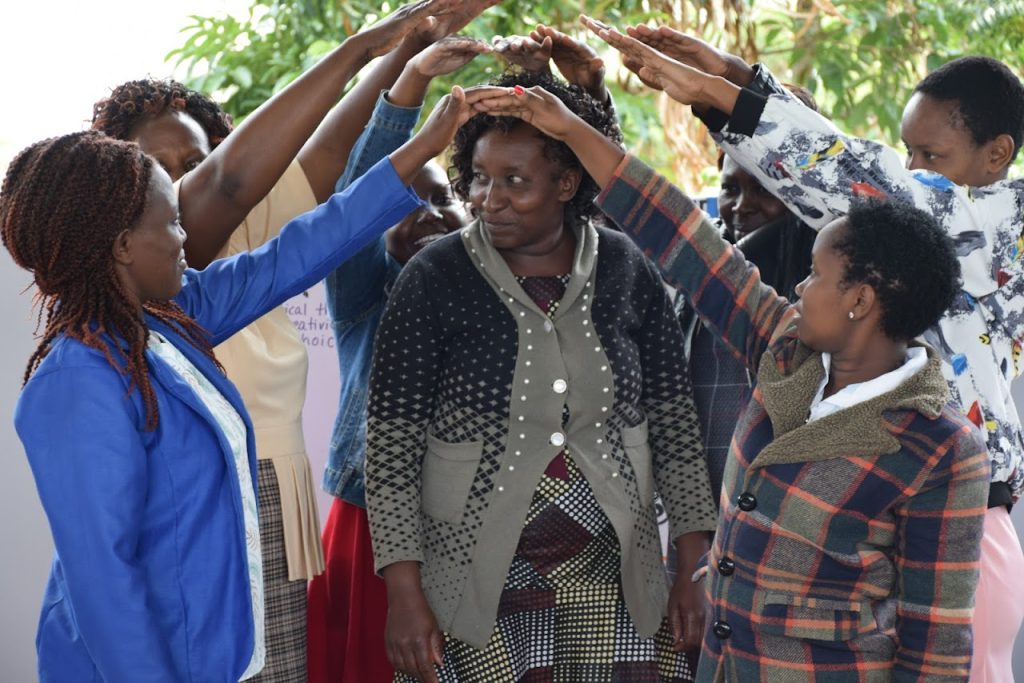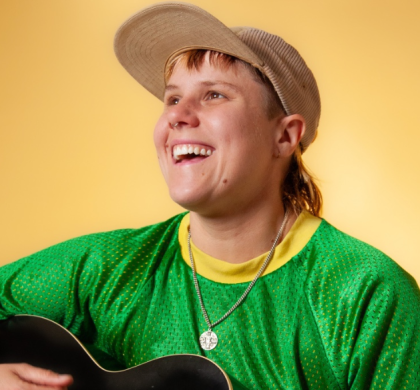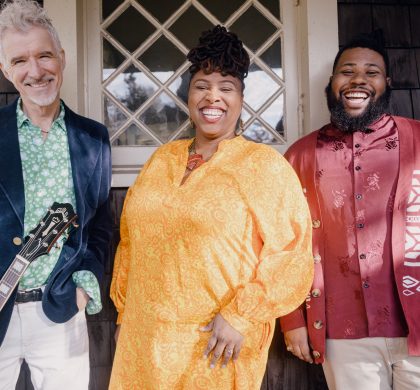Harambee* in Kenya: Supporting Teacher Practice and Young Families in Wamunyu

Oct 22, 2024
“Pole pole, pole pole; go slow, go slow. Pole pole, pole pole; that’s where the animals go!”
This past June, Wolf Trap Institute for Early Learning through the Arts extended its reach to the East African nation of Kenya, through a partnership with Maryland and Kenya-based Kenya Connect, in collaboration with the Gupta Family Foundation. Wolf Trap Master Teaching Artist Christina Farrell and Institute Early Childhood Arts Specialist Luisa Avilés met with nearly 400 educators, young children, and families as part of a two-week early childhood arts residency in the rural community of Wamunyu, which is located in the Machakos region, approximately 108 km from the capital of Nairobi.
The initiative, which supported Kenya Connect’s mission to engage and empower teachers, children, and young families in rural Kenya, was a community-wide event that celebrated joyful, active learning through the arts. Farrell led two family workshops, two professional development workshops with teachers, and three multi-day classroom residencies in Kisinzini and Kambiti Primary Schools, during which she demonstrated strategies specifically directed to the unique needs of 3 to 5-year-old children. Teachers learned how to pique children’s interest in learning through music and active participation.
“All of my teaching has been writing on the board, [with] children repeat[ing] while [they are] sitting down,” said Eunice Munywoki, an early childhood teacher at Kisinzini Primary School. “I am excited to learn strategies where I am not always writing on the board.”
Early childhood teacher Margaret Njoki Muiruri shared that she was excited to discover how to achieve multiple learning objectives (literacy and numeracy, for example) through a single music-based experience and enjoyed learning “how to use songs while narrating books.”
Adapting Strategies to Reflect the Local Community
At the start of each residency, Wolf Trap Teaching Artists meet with their teaching partners to discuss their learning goals and determine if the class has any special needs for which they need to be aware. For Farrell’s residencies in Wamunyu, she worked with the primary school teachers to design and co-create the program to align with their curriculum, incorporate their local language, and make connections relevant to the Kamba community.
Together, they incorporated Kamba words in the songs: “Kithembe, Kithembe, where are you…” was substituted for “Mr. Drum, Mr. Drum, where are you?” and “Mama Panya’s Pancakes: A Village Tale from Kenya” was used as the focus story to learn literacy and math. Farrell provided cards to teachers with song lyrics in both English and Kikamba, the local language, and worked with the teachers to make their call-and-response chants (a popular form of communication in Kenyan culture) more interactive, by inviting children to create their own lyrics.

Putting Strategies to Work in the Classroom
Teachers were eager to take what they learned in Farrell’s professional development workshops and immediately implement those ideas into their classrooms. Before Farrell arrived for her first day of classroom residencies at Kisinzini Primary School she found that her teaching partner, Teacher Eunice, had already set up a dramatic play market for the children to pretend to buy and sell goods together: “First thing in the morning I set up a market for the children where they could retell the story of the book, using empty paint cans as baskets, and have children talking to each other [as shopkeepers],” said Teacher Eunice.
Teacher Florence used the air flute for transitions between activities, and Teacher Catherine’s class used rhythmic instruments such as egg shakers to help her assess number recognition.
“The three teachers in the classrooms took the strategies I modeled and adapted them to fit the unique needs of their classrooms,” said Farrell. “They were inspired to use simple objects for dramatic play and they found creative ways to use instruments to reinforce letters, shapes, and colors.”
Connecting Through the Arts
When new visitors arrive, Kamba names are bestowed upon each individual, as an invitation to become a part of the community. Farrell was called Mutheu, meaning purity; Aviles’ Kamba name was Mueni, or “Visitor of Many Places.” At each location they visited, Farrell and Aviles introduced themselves by their Kamba names and were greeted with enthusiastic welcome songs and dances. That feeling of community, belonging, and celebration made a lasting impression on Farrell.
“One of the reasons I work as a teaching artist is because I believe strongly in the power of the arts to build community and nurture our humanity,” said Farrell. “It was so impactful for me to see how dance and music were an integral part of the school communities in Wamunyu. Everyone participated and was welcome to join in. I hope to share this spirit of coming together through the arts in my own work moving forward.”
To hear more about Wolf Trap’s work in Wamunyu, listen to the Kenya Connect podcast with Farrell and Aviles; learn more about Kenya Connect’s work with local communities: kenyaconnect.org
* Kenya’s national motto is “Harambee,” which means “pulling together.”
Recommended Posts

Jamming with Jules: Music for Kids of All Ages
Jul 21, 2025 - Education, Experience, For Kids, Institute, Summer


